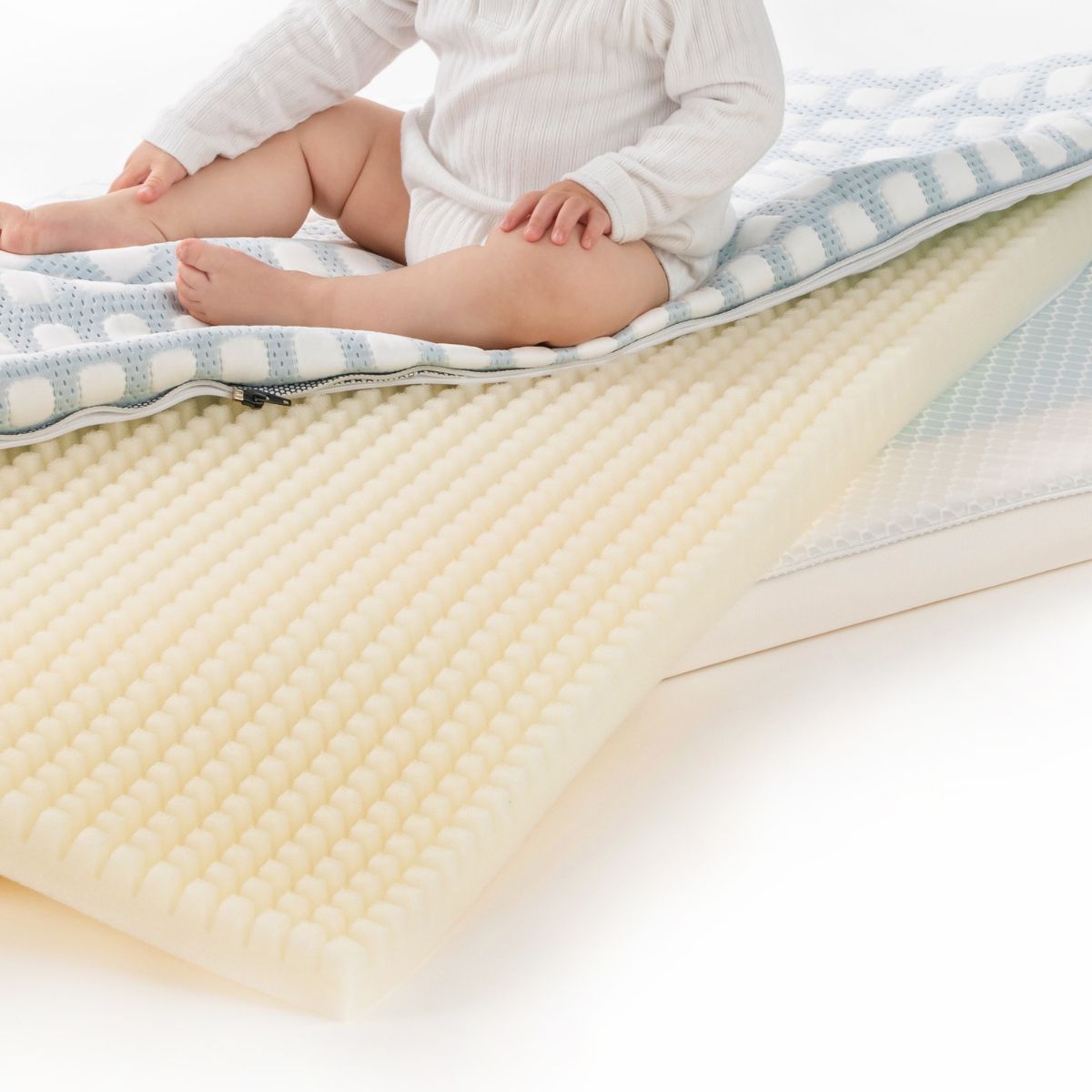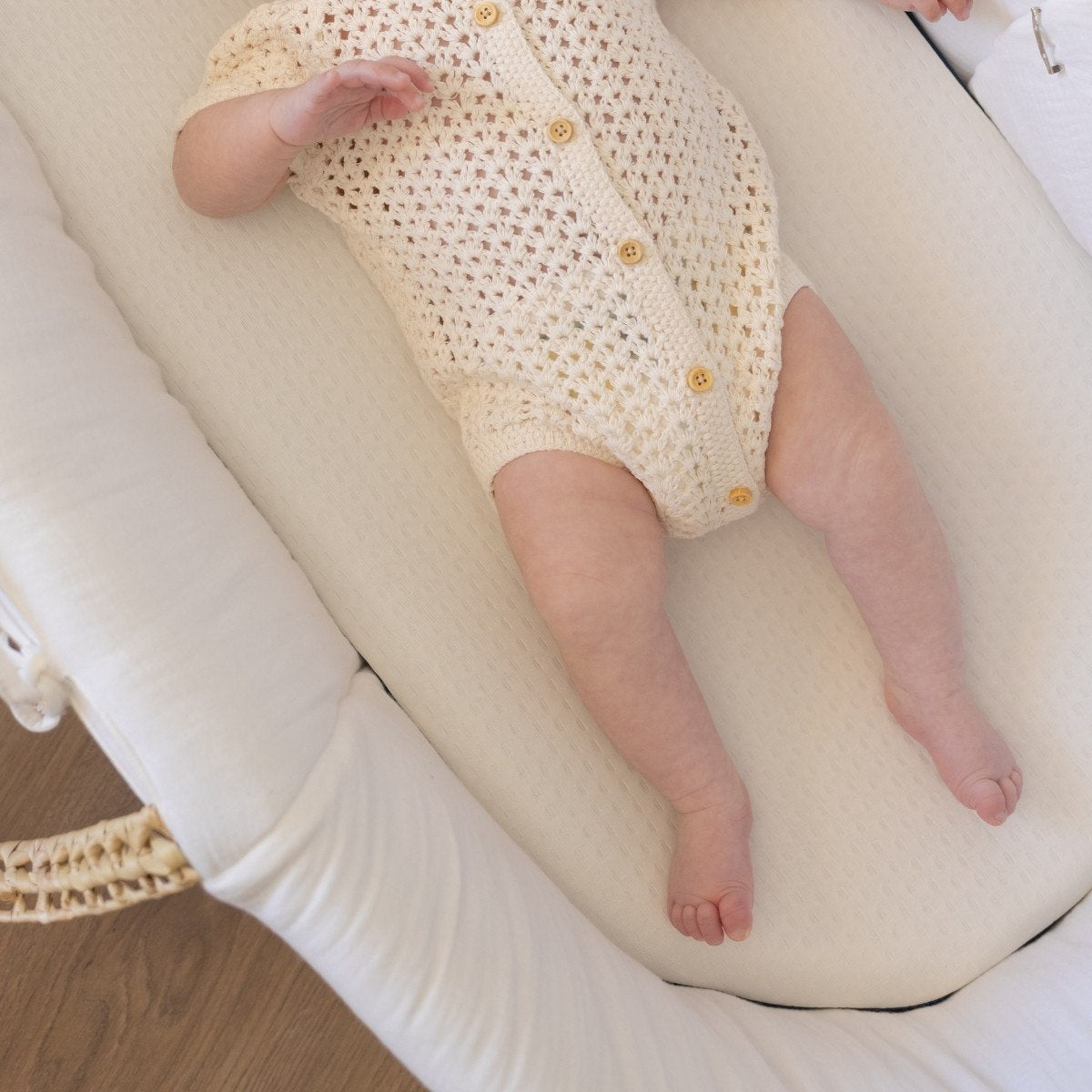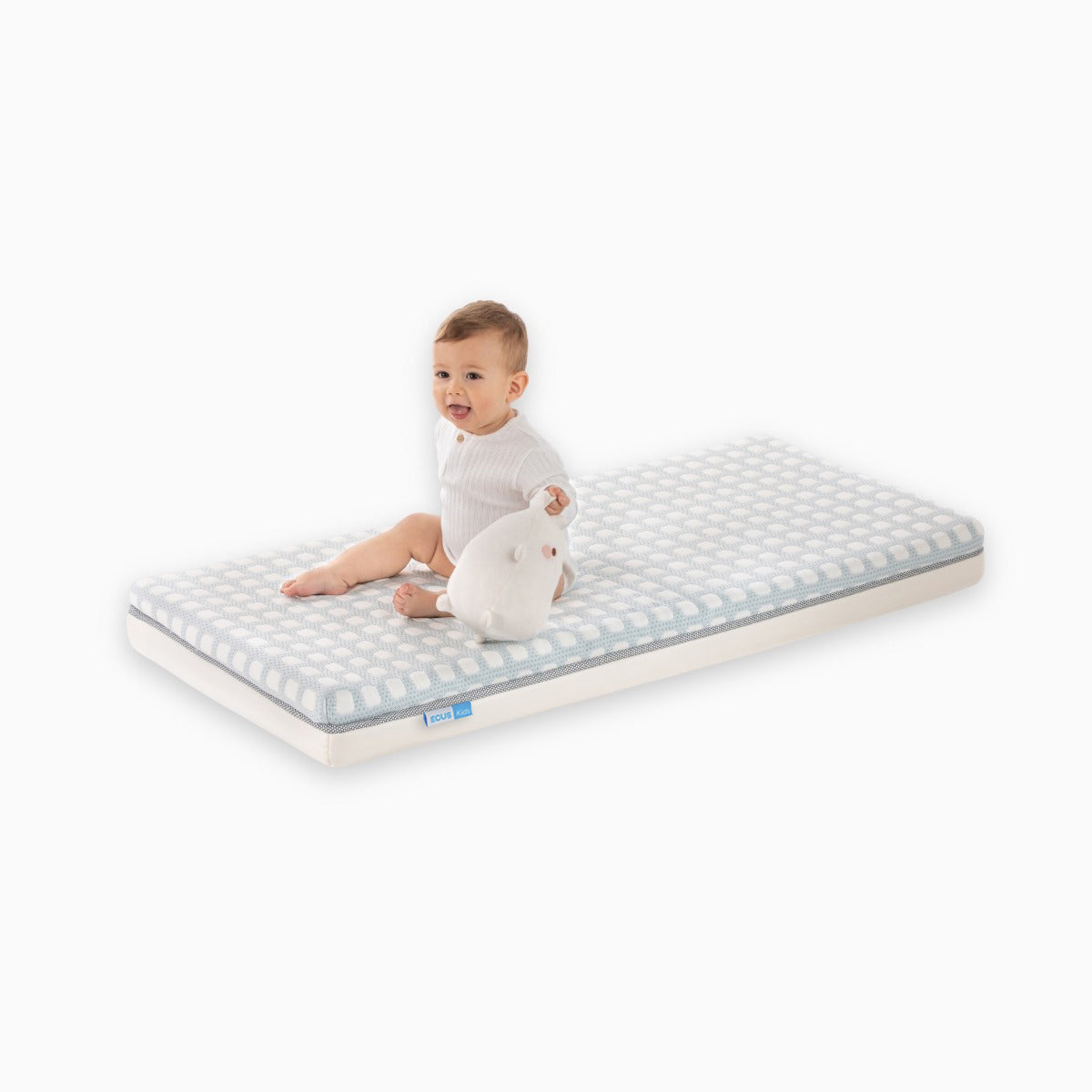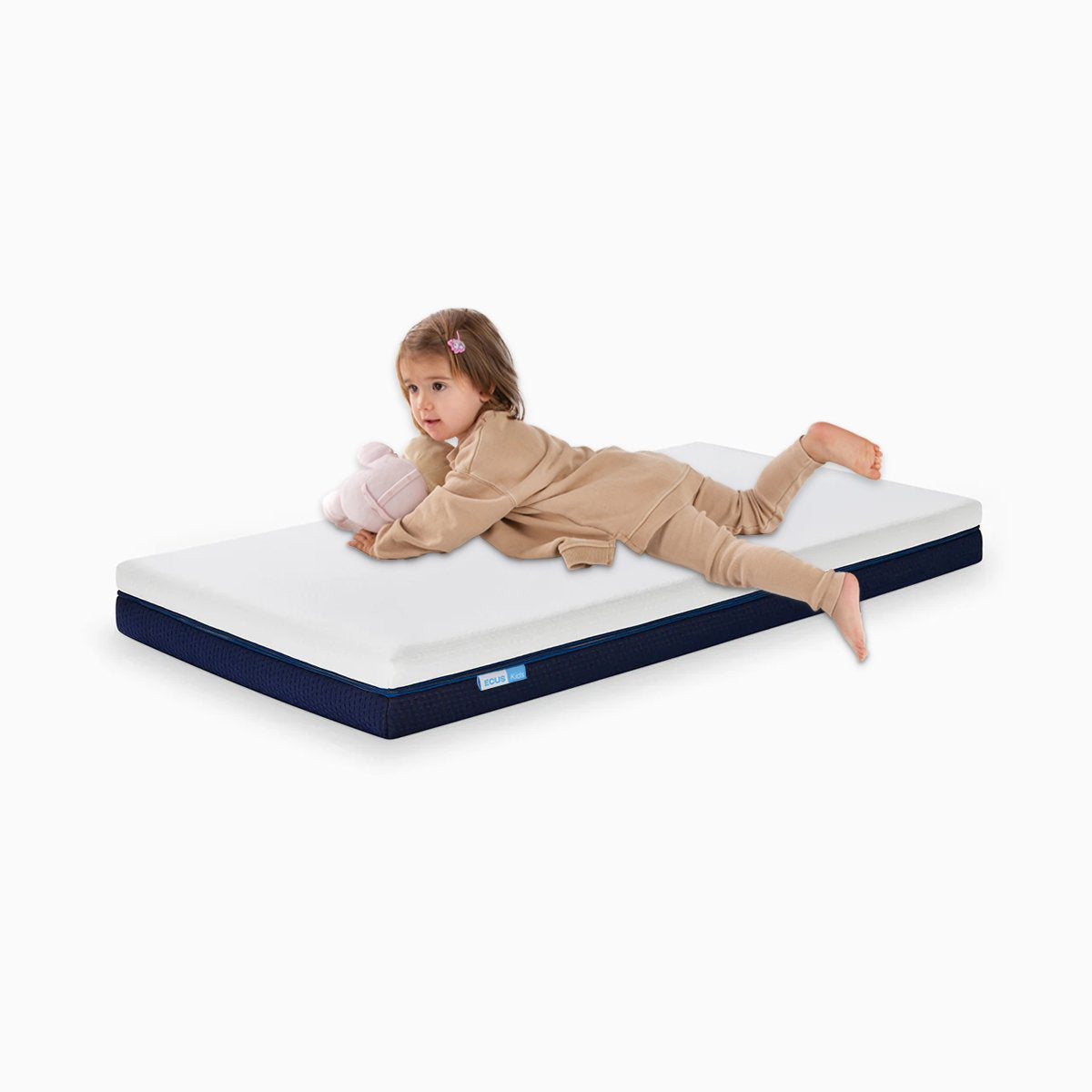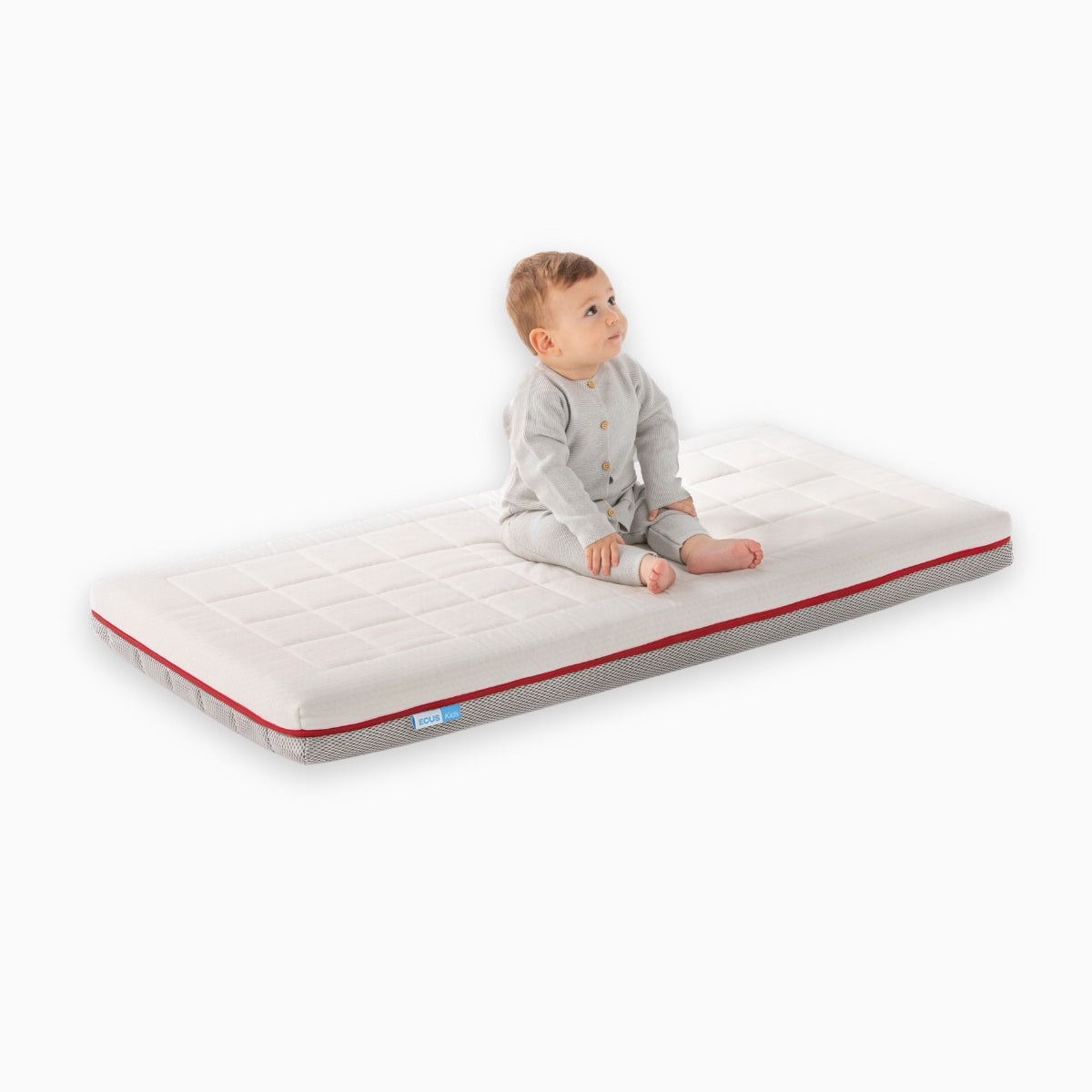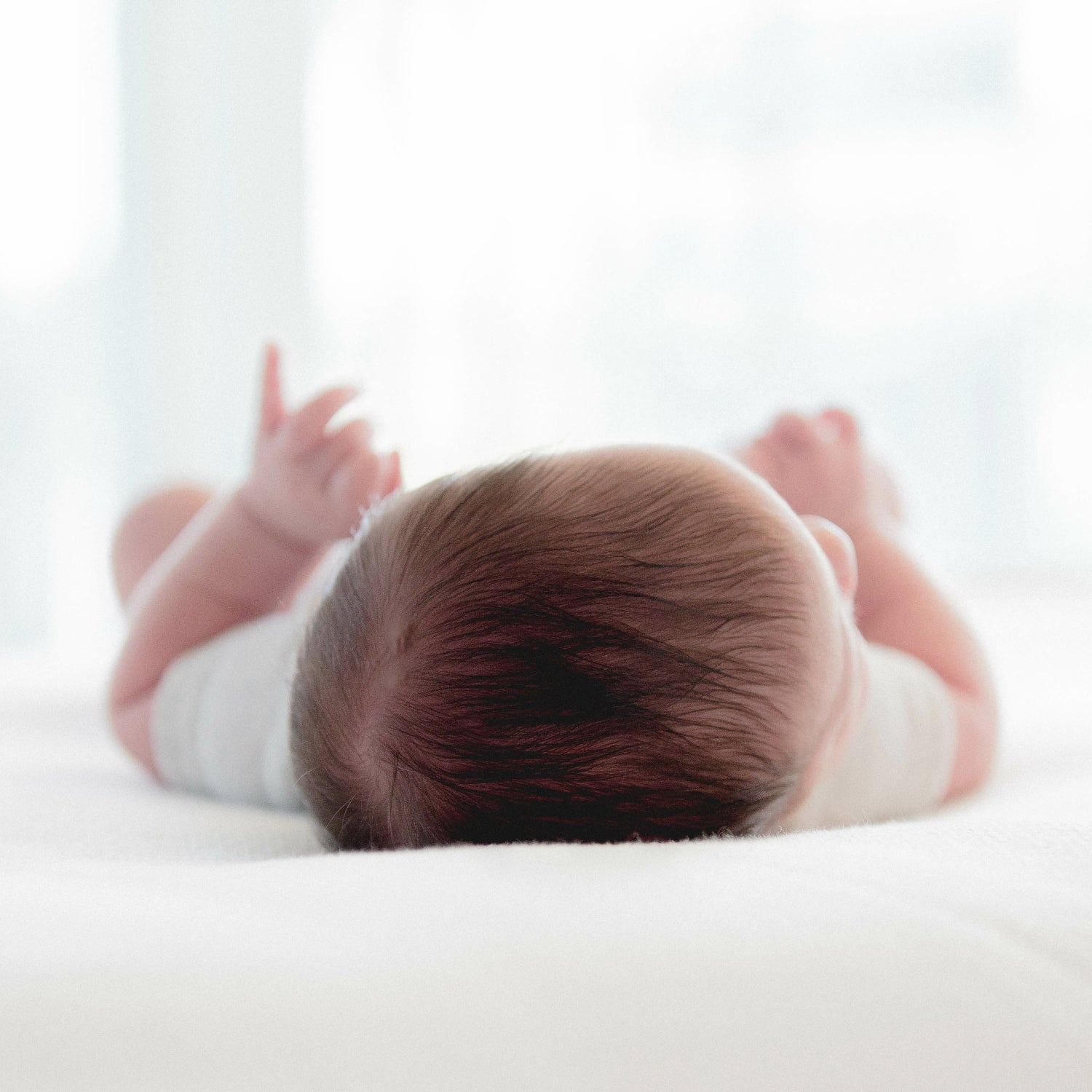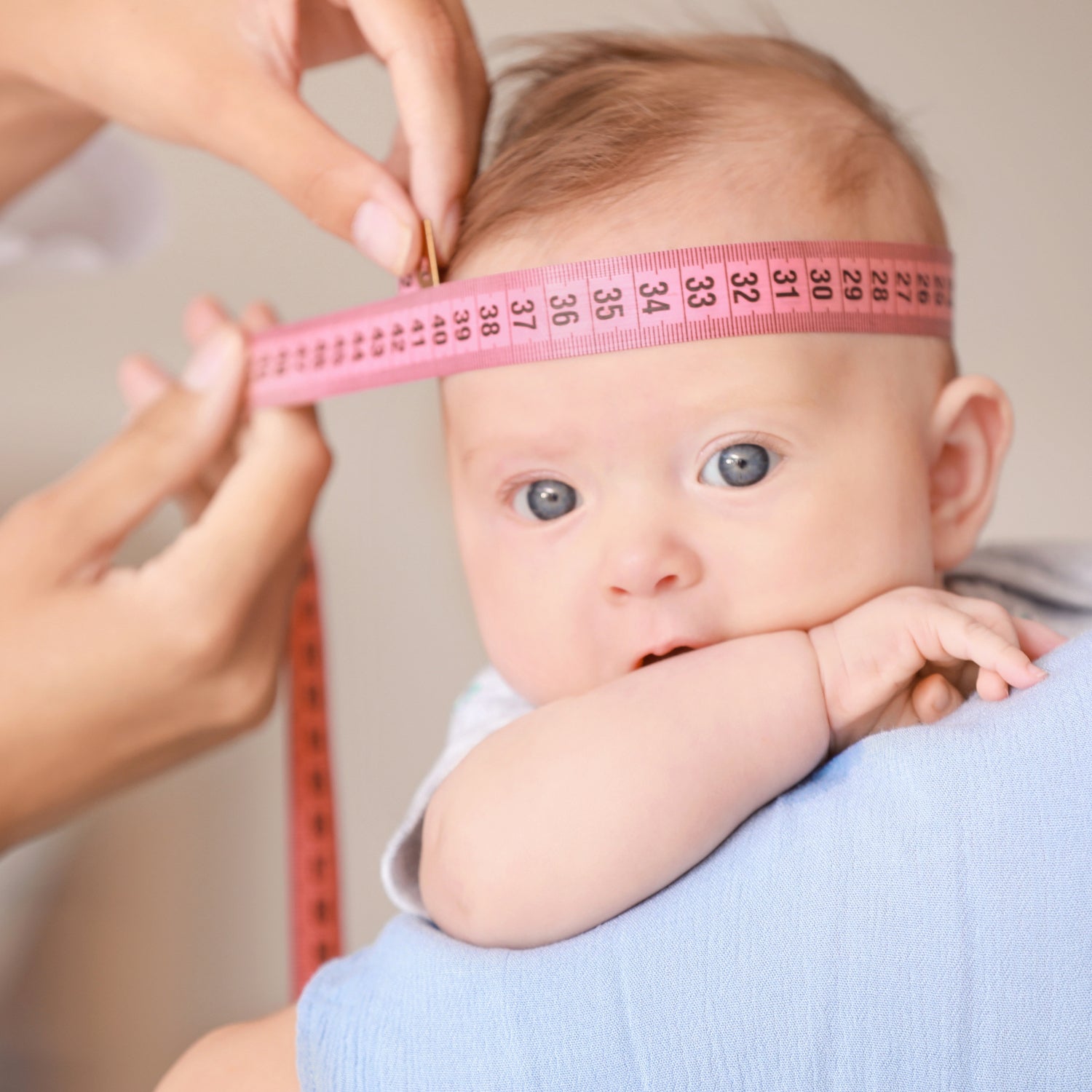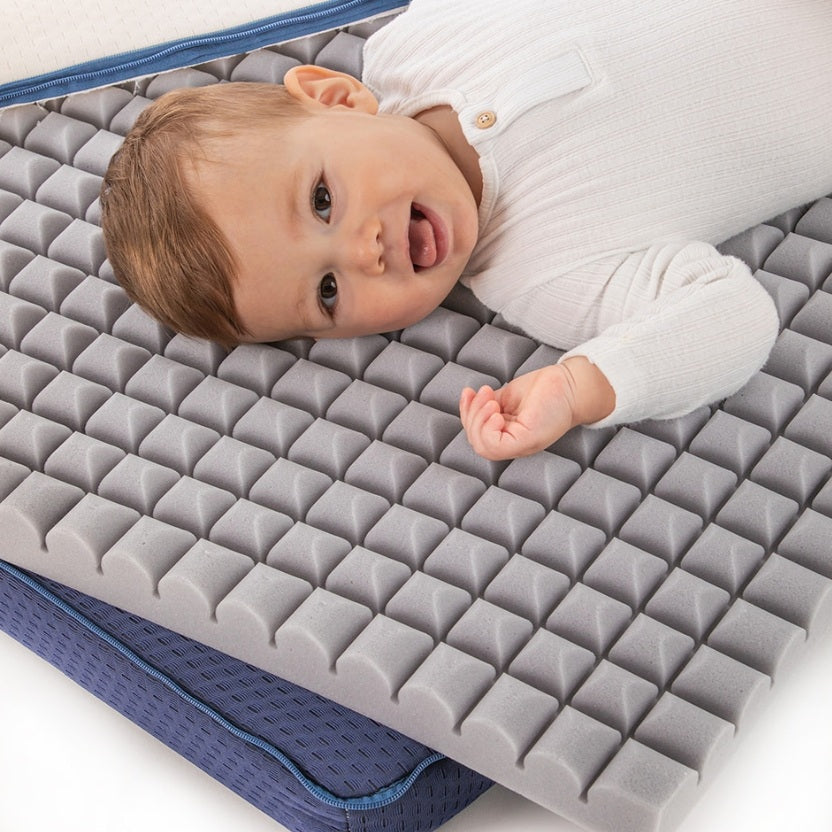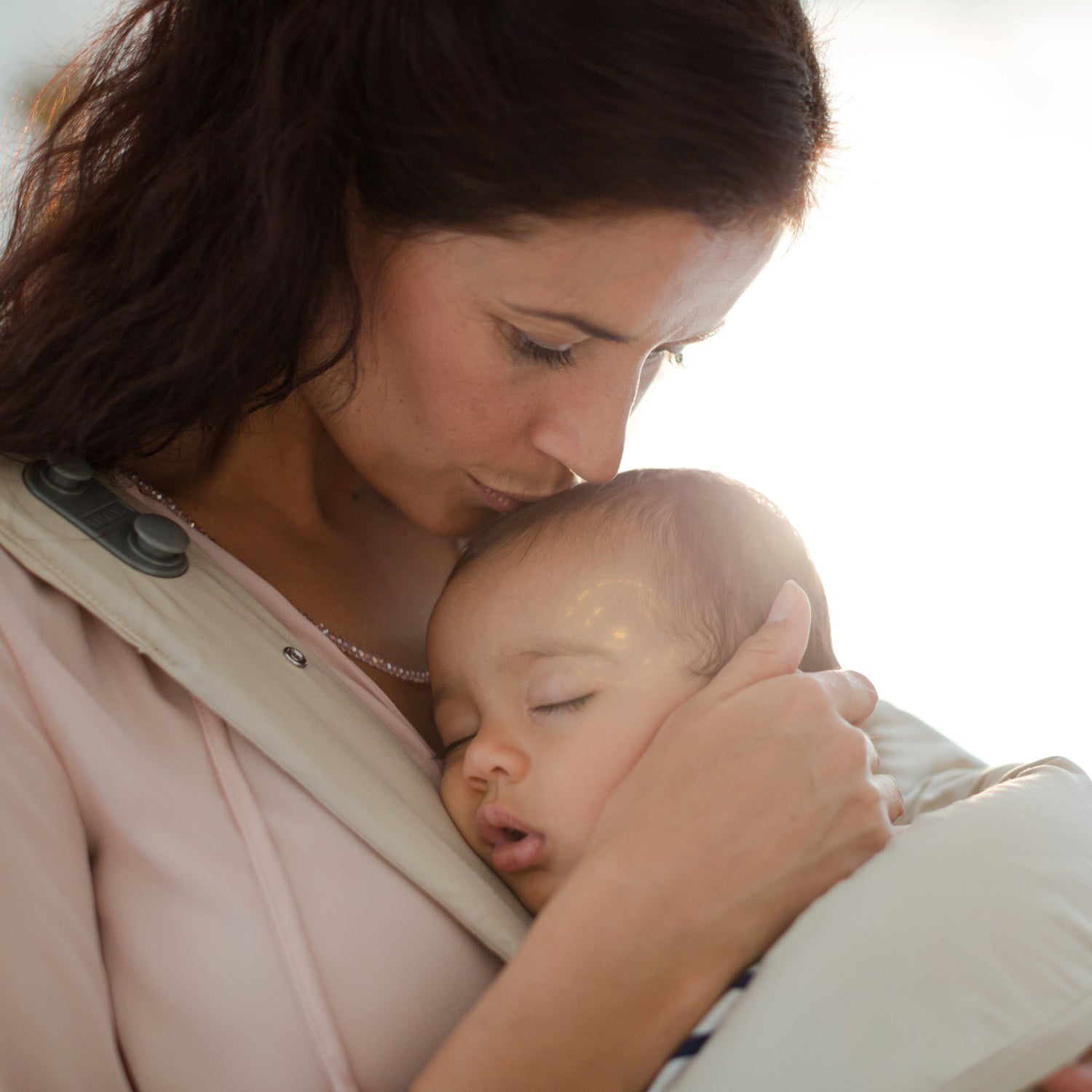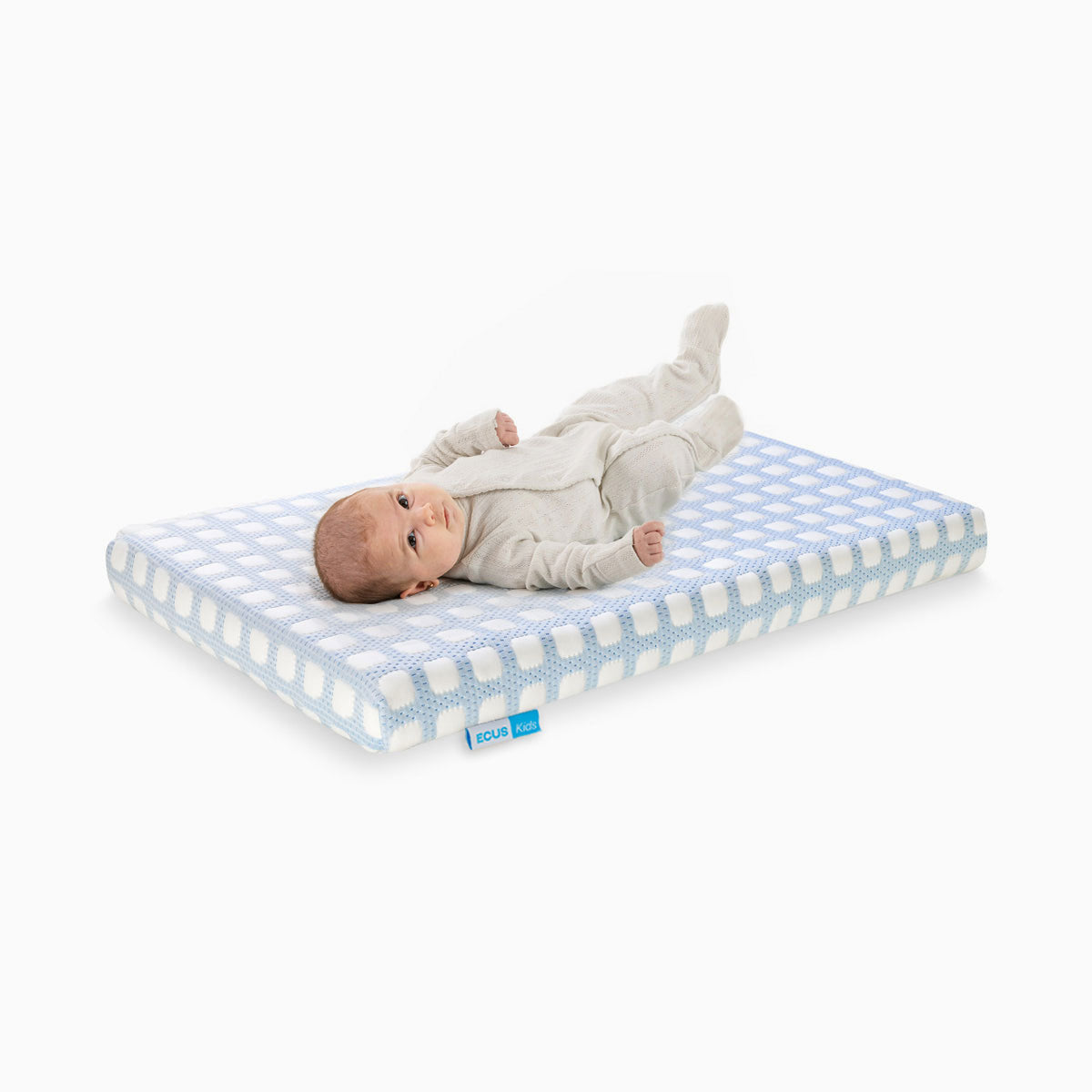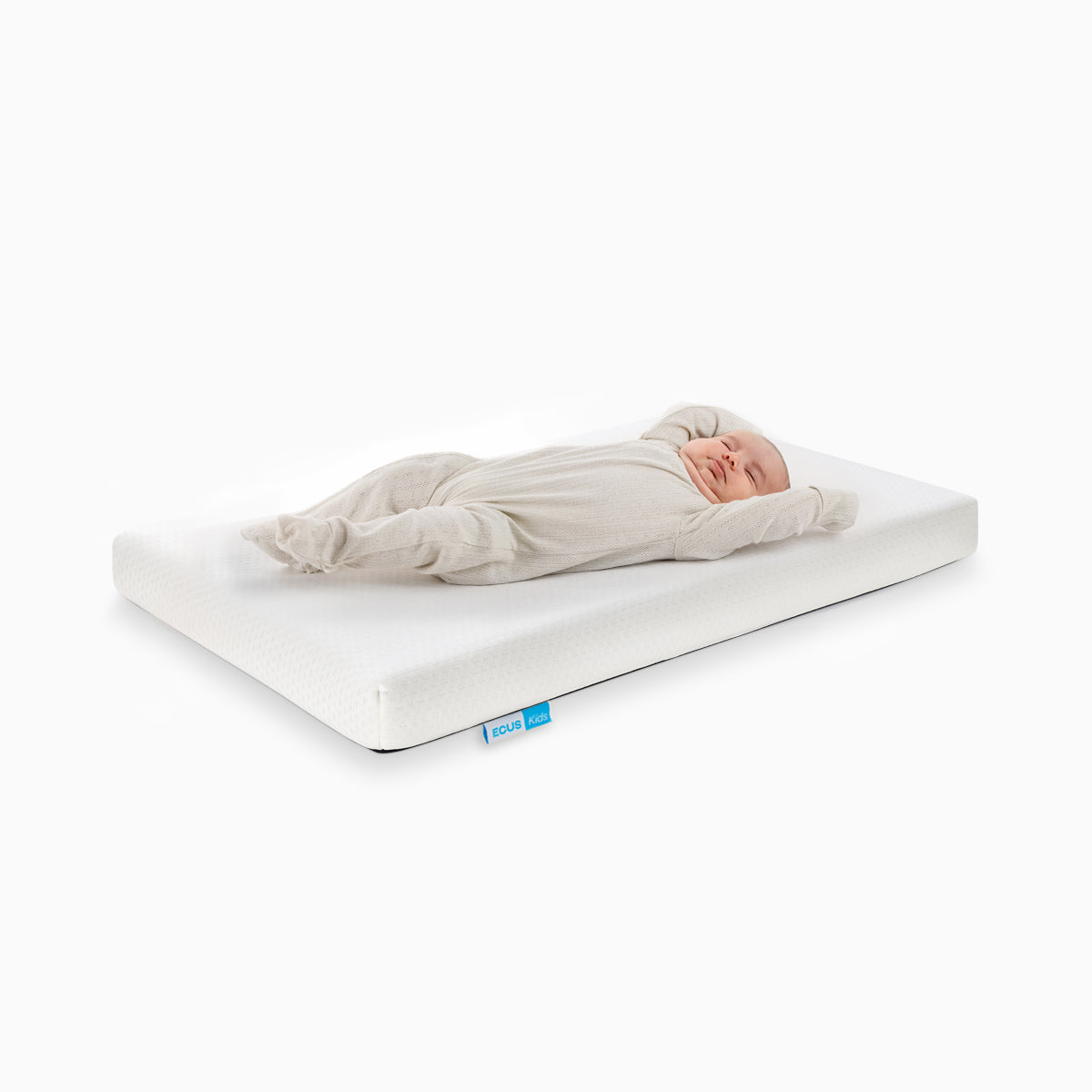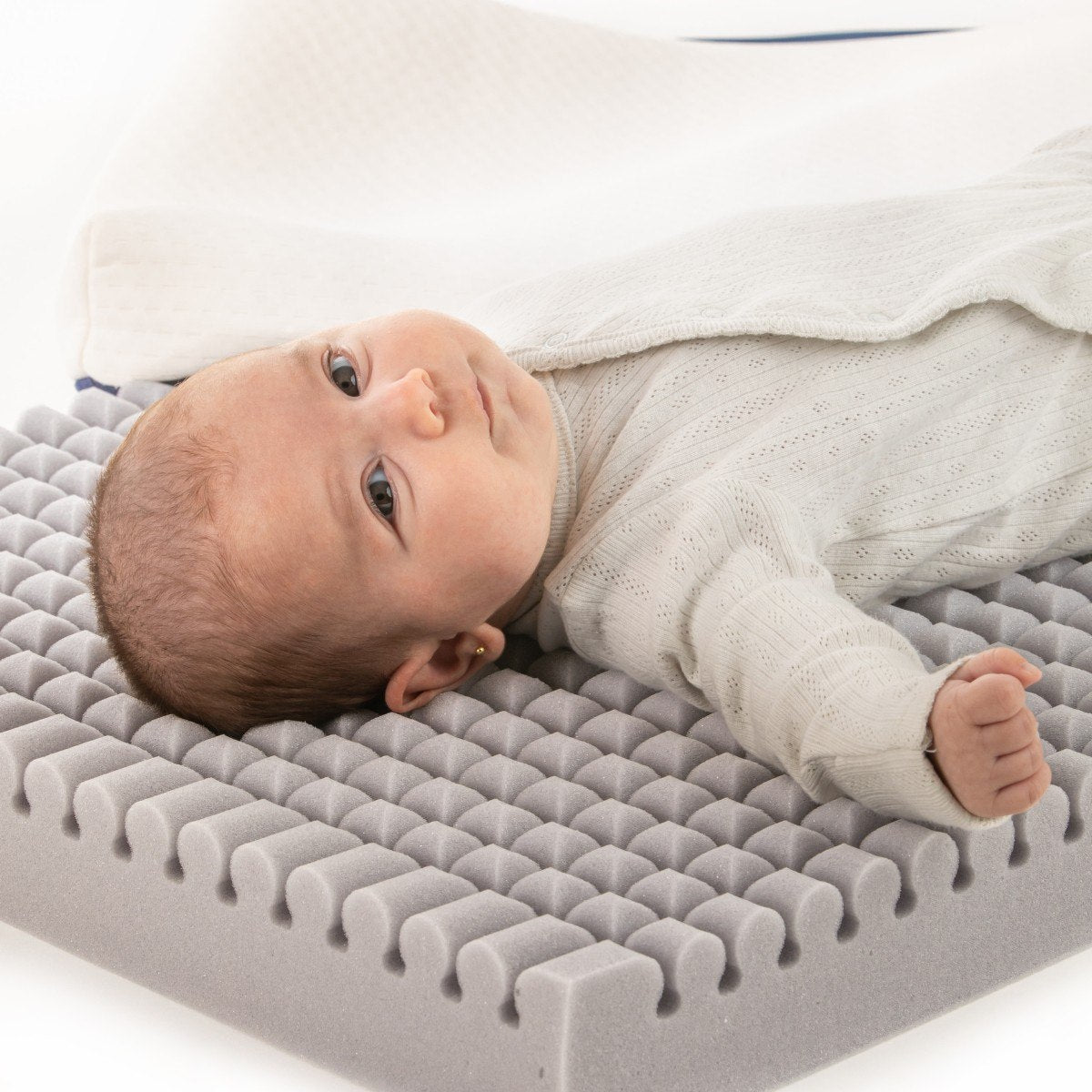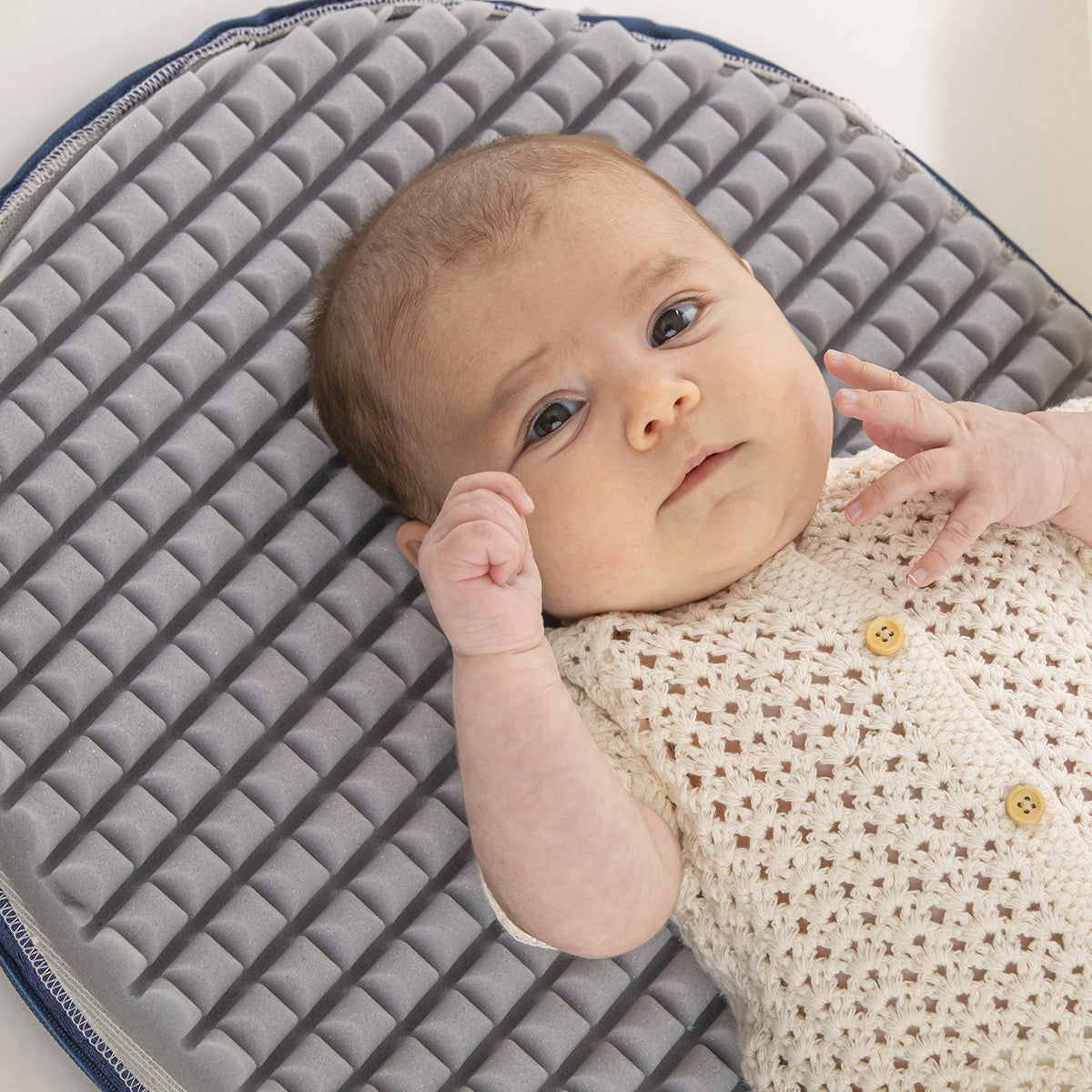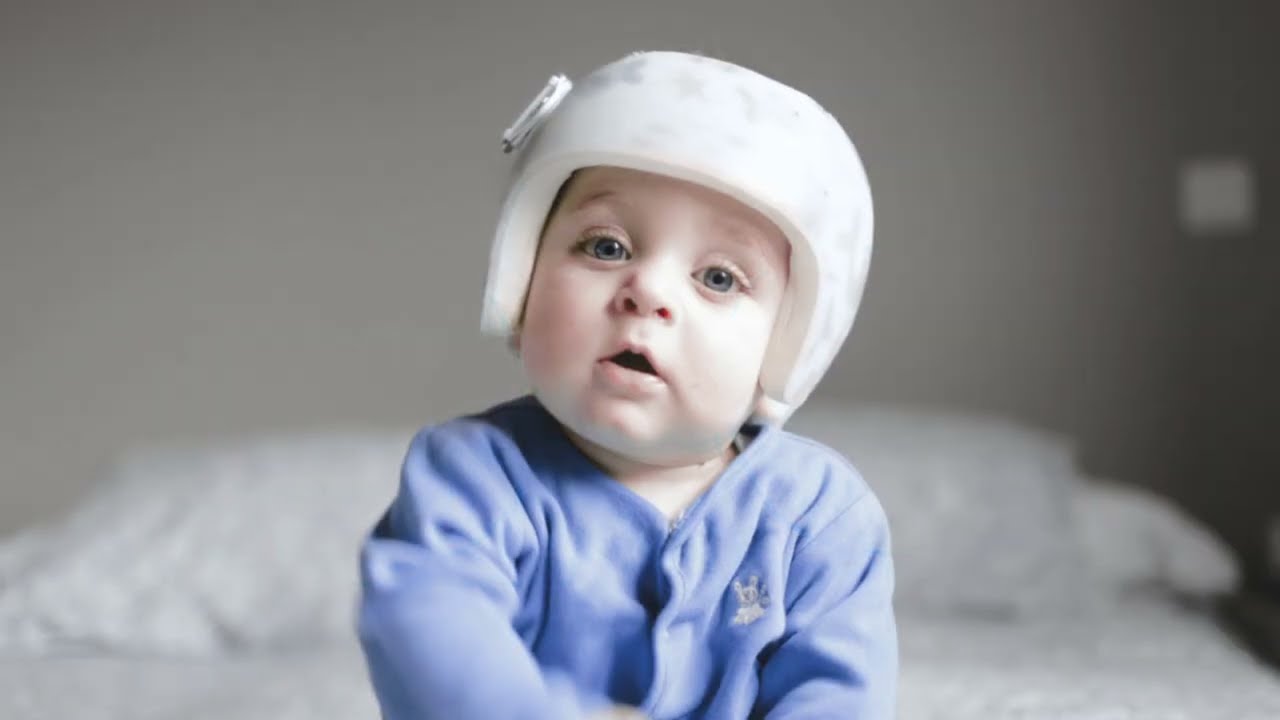
Plagiocephaly is an increasingly common reason in pediatric physiotherapy consultations.
Since pediatricians recommend that babies always sleep on their backs to avoid sudden death, cases of plagiocephaly have increased exponentially.
Babies, especially in the first months, spend most of their time lying down, resting their little heads on hard surfaces. This continuous pressure can end up flattening the back of the skull, which has not yet fully closed, leading to plagiocephaly.
CRIB MATTRESSES
Care® solutions for plagiocephaly
plagiocephaly
suffocation
adaptable
Mattresses that prevent plagiocephaly and asphyxia


The mattresses in the Care® range have been specifically designed to reduce pressure on the baby's head.
Thanks to its foam in the form of small bubbles, the baby's little head never rests in the same way, avoiding excessive and continuous pressure on one side of the head.CRIB MATTRESSES AND BASKETS
Care® solutions for plagiocephaly
Do you want to know more?
If you want to learn more about plagiocephaly, its causes, consequences, and how to prevent it, take a look at our blog. You will find information and tips to care for your baby's little head. We look forward to sharing with you all the information you need!
What is plagiocephaly and how can I tell if my baby has it?
During the first months of life, the skull grows spectacularly, which causes a mismatch between the size of the body and that of the head, making it difficult to detect plagiocephaly. Additionally, they start to have hair, which hides the sinking in the skull from plain sight.
The best way to monitor the development of plagiocephaly is in the shower, when we wash the baby's head and the hair sticks to the skull. We will look from above and from both sides, this way we will better detect any possible asymmetry.
Main causes of plagiocephaly
The skull of babies is very malleable as the cranial bone is not yet formed, which means that any prolonged external pressure or a certain sustained posture can cause a deformity that is noticeable at first glance.
The causes of plagiocephaly or flat head syndrome can occur during pregnancy or childbirth, but the most common is that they originate from prolonged exposure of the baby's head in the same position while sleeping. This is known as positional or postural plagiocephaly.
What consequences does plagiocephaly have?
In addition to the aesthetic deformity, plagiocephaly can also have consequences for the health and development of the baby.
Depending on the severity of the cranial deformity, there may be a risk of hearing problems, visual problems, bite problems, and motor development issues. It has also been observed that children with plagiocephaly may experience delays in cognitive and language development.
Plagiocephaly and other cranial deformities in babies
The shape of a baby's head at birth is a common concern for parents and healthcare professionals. In some cases, newborns may develop cranial deformities, and it is essential to understand the different shapes they can take and their possible causes.
Three of the most common cranial deformities in newborns are plagiocephaly, brachycephaly, and dolichocephaly or scaphocephaly.
Plagiocephaly is not just an aesthetic problem
Plagiocephaly or cranial deformity in babies is not just an aesthetic problem, but if it is not prevented or treated in a timely and appropriate manner, it can lead to a more severe flattening of the head that can have long-term consequences on the health and development of babies.
There are more severe cases of plagiocephaly in babies that have been associated with other health problems. The deformity in the shape of the head can alter the position of the eyes, ears, and jaw, which can cause facial asymmetry.
How to prevent plagiocephaly?
Some of the simplest tips on how to prevent plagiocephaly are: gently moving the baby's head every 2 hours while sleeping; avoiding long hours in the stroller or car seat; stimulating head movement with games and placing them on their stomach while awake; holding them in your arms and practicing babywearing, in addition to a mattress that reduces pressure.
In summary, stimulating the baby's head movement in some way and thus avoiding constant pressure on hard surfaces.
Continue reading
How to prevent flat head syndrome in newborns?
In addition to the mattress, there are several behaviors that can help prevent positional plagiocephaly in newborns. Here are a series of very useful tips to avoid having the baby always in the same position:
- Tummy Time/ "tummy time": Whenever the baby is awake and under supervision, we will try to place them on their stomach for as long as possible. This practice will encourage the strengthening of the newborn's neck muscles, prompting them to move their head.
What is the best anti-plagiocephaly mattress?
An anti-plagiocephaly mattress is one that is designed to prevent cranial deformation in babies and avoid the appearance of plagiocephaly or flat head syndrome. It can be a good preventive measure against plagiocephaly and help solve the problems arising from plagiocephaly in the medium and long term.
The surface where the baby rests should be a safe, breathable, and adaptable mattress, especially in the areas where it is most needed, avoiding the continuous pressure exerted on the baby's head.
Plagiocephaly: one problem, two solutions
Plagiocephaly affects 47% of babies. At Ecus Kids, we work on the prevention of postural deformations in the skull in newborns and infants through our Care mattress line.
The mattresses in the Care series prevent and correct plagiocephaly, and are certified as health products by the Spanish Agency of Medicines and Health Products (AEMPS) belonging to the Ministry of Health. These features make it the safest crib mattress for your baby.
Should I be worried about plagiocephaly?
In general, plagiocephaly does not cause pain or discomfort in the baby, but it can affect their physical appearance. While they are a baby, they will not realize that their head has an abnormal shape or that they have facial asymmetry in the position of the ears, for example.
But, as they grow, they may start to compare their appearance with that of other children, feel uncomfortable, be the subject of teasing, and decrease their self-esteem.
